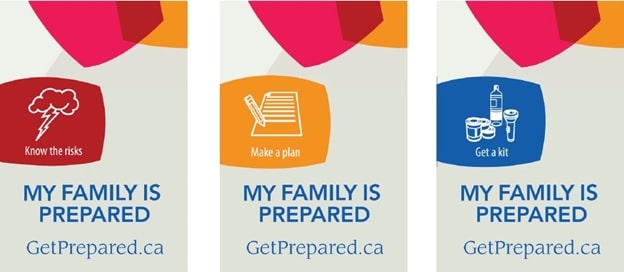Are you prepaid for emergencies? May 7th marks the first day of emergency preparedness week. You can’t always predict an emergency, but you can prepare for one. Know the risks in your community. Make a plan so you know what to do. Prepare an emergency kit.
Know the Risks
Although the consequences of disasters can be similar, knowing the risks in your region can help you better prepare yourself. Hazards can be either natural disasters or of an industrial/commercial nature. In this region, some of the hazards that could be considered high risk include: transportation emergencies, water system emergencies, HAZMAT events, Flooding, tornadoes, and electrical system failures.
Make a Plan
Every Canadian household needs an emergency plan. Your family may not be together when a disaster occurs. Plan now to meet or contact one another. Write down your family plan and keep it in an easy to remember place (e.g. by your emergency kit). Make a copy and keep it at work or in your car. Make sure your family is familiar with the plan, and your children know what to do if and emergency occurs while you are not together.
Prepare a Kit
Prepare a kit to be self-sufficient for at least 72 hours. A basic emergency kit should include water (2 litres/person/day), non-perishable packaged food, flashlight, wind-up radio, first aid kit, compass, whistle, blankets, toiletries, medications, important papers (in waterproof bags), and some cash in small bills and change. Store these items in a backpack or duffel bag in an easily accessible place. Make sure everyone in your household knows where it is.
This emergency preparedness week take the opportunity to prepare yourself and your family.
For more information, you can visit www.getprepared.gc.ca. or the CK Public Health Unit at 519.352.7270


